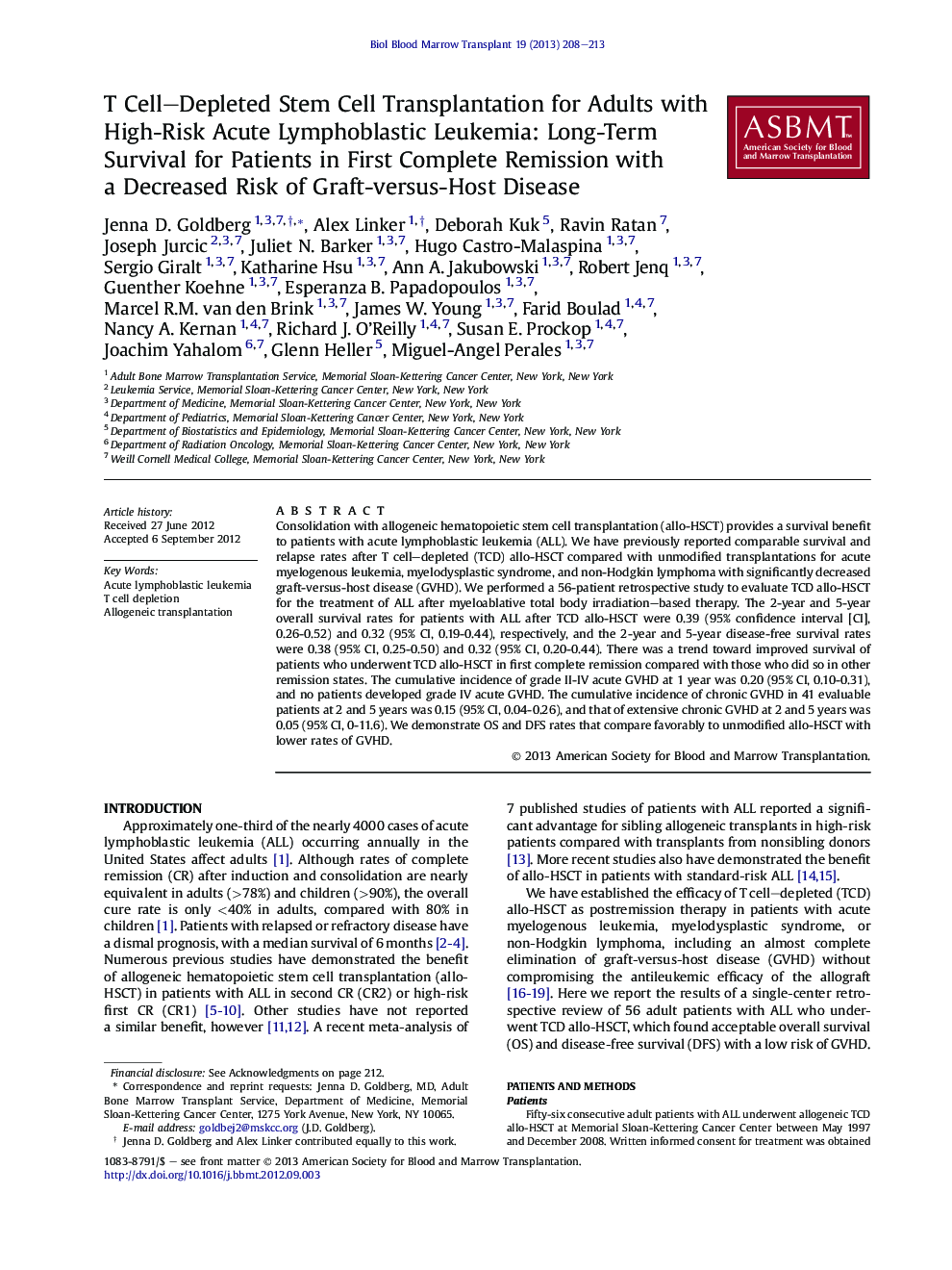| Article ID | Journal | Published Year | Pages | File Type |
|---|---|---|---|---|
| 2103125 | Biology of Blood and Marrow Transplantation | 2013 | 6 Pages |
Consolidation with allogeneic hematopoietic stem cell transplantation (allo-HSCT) provides a survival benefit to patients with acute lymphoblastic leukemia (ALL). We have previously reported comparable survival and relapse rates after T cell–depleted (TCD) allo-HSCT compared with unmodified transplantations for acute myelogenous leukemia, myelodysplastic syndrome, and non-Hodgkin lymphoma with significantly decreased graft-versus-host disease (GVHD). We performed a 56-patient retrospective study to evaluate TCD allo-HSCT for the treatment of ALL after myeloablative total body irradiation–based therapy. The 2-year and 5-year overall survival rates for patients with ALL after TCD allo-HSCT were 0.39 (95% confidence interval [CI], 0.26-0.52) and 0.32 (95% CI, 0.19-0.44), respectively, and the 2-year and 5-year disease-free survival rates were 0.38 (95% CI, 0.25-0.50) and 0.32 (95% CI, 0.20-0.44). There was a trend toward improved survival of patients who underwent TCD allo-HSCT in first complete remission compared with those who did so in other remission states. The cumulative incidence of grade II-IV acute GVHD at 1 year was 0.20 (95% CI, 0.10-0.31), and no patients developed grade IV acute GVHD. The cumulative incidence of chronic GVHD in 41 evaluable patients at 2 and 5 years was 0.15 (95% CI, 0.04-0.26), and that of extensive chronic GVHD at 2 and 5 years was 0.05 (95% CI, 0-11.6). We demonstrate OS and DFS rates that compare favorably to unmodified allo-HSCT with lower rates of GVHD.
